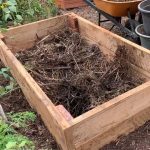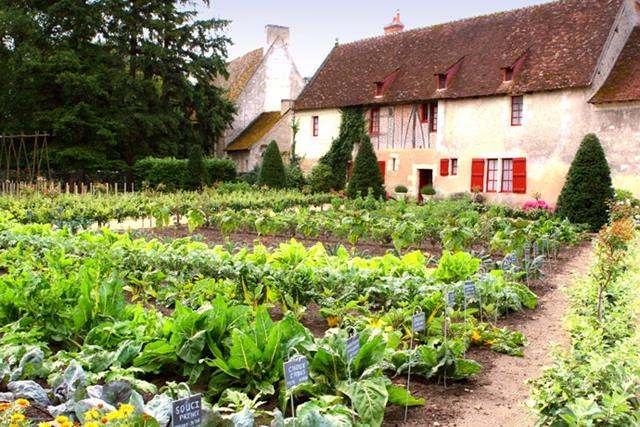Are you ready to embark on a rewarding and fulfilling journey into the world of vegetable gardening? Whether you have a sprawling backyard or just a small balcony, growing your own vegetables can bring immense satisfaction and joy. Not only will you have access to fresh, flavorful produce right at your fingertips, but you’ll also experience the satisfaction of nurturing living plants and witnessing them thrive.
Gardening is much more than just a hobby; it’s a way to connect with nature and reap the countless benefits it offers. From improving mental health to promoting physical well-being, vegetable gardening has been proven to reduce stress levels, provide exercise, and even enhance one’s mood. Plus, what could be more satisfying than savoring a meal that you’ve grown with your own two hands?
In this blog post, we’ll guide you through the basics of vegetable gardening for beginners. We’ll lay down the groundwork for your successful garden by discussing essential factors like selecting the right location, preparing the soil, ensuring proper sunlight exposure, and providing adequate drainage. We’ll also equip you with a list of must-have tools and supplies to set yourself up for success.
So whether you’re a complete novice or have dabbled in gardening before, get ready to roll up your sleeves and dig in. We’ll help you choose suitable vegetables for your garden, guide you step-by-step on planting and sowing techniques, offer tips on caring for your growing vegetables, and provide advice on troubleshooting common issues.
By the end of this journey together, not only will you be harvesting delicious homegrown produce but also gaining valuable knowledge that will benefit your future gardening endeavors.
Remember: vegetable gardening is an ongoing learning process that requires patience and dedication. Don’t be discouraged by setbacks or challenges along the way; instead, let them serve as valuable lessons in your gardening journey. So let’s get started – welcome to the wonderful world of basic vegetable gardening for beginners.
Understanding the Basics
Selecting the Right Location
When it comes to vegetable gardening, one of the most crucial factors for success is choosing the right location for your garden. Vegetables need a lot of sunlight to thrive, so it’s important to find a spot that receives at least six hours of direct sunlight each day. Additionally, consider the proximity to a water source and make sure it is easily accessible for watering the plants.
Preparing Your Soil
Proper soil preparation is another key element in setting up a successful vegetable garden. Begin by removing any weeds or existing vegetation from the area where you plan to plant your vegetables. It’s also helpful to break up compacted soil with a tiller or garden fork. Once you have cleared the area, incorporate organic matter such as compost or well-rotted manure into the soil to improve its fertility and structure.
Sunlight and Drainage
In addition to selecting an area with ample sun exposure, it’s essential to ensure proper drainage for your vegetable garden. Excess water can drown plant roots and lead to diseases or root rot. If you have heavy clay soil that drains poorly, consider creating raised beds or containers to improve drainage. On the other hand, sandy soil tends to drain too quickly but can be amended by adding organic matter.
By understanding and addressing these basic requirements – selecting the right location, preparing your soil properly, and ensuring proper sunlight and drainage – you will lay the groundwork for a successful vegetable garden. These steps will not only set your plants up for healthy growth but will also help prevent common issues such as poor yields or disease outbreaks. So before you start planting your favorite vegetables, take some time to get these basics right and set yourself up for gardening success.
Essential Tools and Supplies
Must-Have Gardening Tools for Beginners
Before diving into the world of vegetable gardening, it’s important to equip yourself with the right tools. Here are some essential gardening tools that every beginner should have:
- Hand Trowel: A hand trowel is a small shovel-like tool used for digging small holes, transplanting seedlings, and working with container gardens. It’s a versatile tool that will come in handy for various gardening tasks.
- Garden Fork or Spade: A garden fork or spade is useful for turning and loosening the soil, removing weeds and rocks, and preparing the ground for planting.
- Pruning Shears: Pruning shears are essential for trimming and cutting plants, deadheading flowers, and pruning branches. Choose a good quality pair that fits comfortably in your hand.
- Garden Hoe: A garden hoe is helpful for breaking up soil clumps, cultivating the soil surface, and removing small weeds.
- Garden Gloves: Protect your hands from thorns, blisters, and dirt by using proper gardening gloves. Look for gloves that provide good grip and flexibility.
Containers, Pots, or Raised Beds for Limited Space
If you have limited space or don’t have access to a traditional garden bed, don’t worry. There are plenty of options available to grow vegetables in containers or raised beds.
- Containers: Choose containers made of sturdy material like plastic or wood that have drainage holes at the bottom to avoid waterlogging. Ensure the container is deep enough to accommodate the root system of your chosen vegetables.
- Pots: If you prefer growing individual plants instead of mixed varieties in a large container, pots are a great option. Make sure each pot has adequate drainage holes and is large enough to provide ample room for root development.
- Raised Beds: Raised beds are excellent options if you have limited mobility or prefer not to bend over for gardening. They can be constructed using wood, stone, or even recycled materials. Raised beds offer better control over soil quality and drainage.
Useful Supplies for Gardening Success
Apart from tools and containers, there are several other supplies that can enhance your vegetable gardening experience:
- Soil Amendments: Depending on the quality of your existing soil, you may need to amend it with organic matter like compost or well-rotted manure to improve its structure and fertility.
- Fertilizers: Fertilizers provide essential nutrients to plants for healthy growth. Look for organic options such as compost tea, fish emulsion, or seaweed extract.
- Watering Equipment: A watering can or hose with a spray nozzle is essential for providing adequate water to your growing vegetables. Consider installing a drip irrigation system for efficient watering.
Remember, while these tools and supplies are important, they don’t have to break the bank. Start with the basics and gradually invest in additional items as your gardening journey progresses. With the right tools and supplies, you’ll be well-prepared for a successful vegetable garden.
Choosing Your Vegetables
One of the most exciting parts of starting a vegetable garden is choosing which vegetables to grow. However, with so many options available, it can be overwhelming for beginners. In this section, we will provide a comprehensive list of beginner-friendly vegetables and offer advice on selecting vegetables that suit your climate and available space.
When it comes to choosing vegetables for your garden, it’s important to start with varieties that are easy to grow and maintain. Some great options for beginners include tomatoes, lettuce, carrots, cucumbers, and peppers. These vegetables tend to be forgiving and adaptable, making them ideal for those who are just starting out.
Another factor to consider when choosing vegetables is whether you want to start them from seeds or seedlings. Starting from seeds allows you to have more variety and control over your garden but requires more time and patience. On the other hand, starting from seedlings gives you a head start but limits your options.
Additionally, it’s crucial to take your climate and available space into account when selecting vegetables. Certain plants thrive in specific temperatures and conditions, so it’s important to choose varieties that are well-suited for your area. If you have limited space, you may want to focus on compact or container-friendly plants like cherry tomatoes or bush beans.
| Vegetable | Ideal Growing Conditions |
|---|---|
| Tomatoes | Full sun; well-drained soil |
| Lettuce | Partial shade; rich soil with good moisture retention |
| Carrots | Sunny location; loose, sandy soil |
| Cucumbers | Full sun; fertile, well-drained soil |
| Peppers | Full sun; rich, well-drained soil |
Remember that this table is just a starting point. Feel free to explore other vegetables that catch your interest and align with your gardening goals. The key is to choose vegetables that you are excited to grow and eat.
Next in our journey of basic vegetable gardening for beginners, we will dive into the planting and sowing process, providing a step-by-step guide to getting your garden started. Stay tuned for expert tips on preparing the soil and successfully planting seeds or transplanting seedlings.
Planting and Sowing
After understanding the basics of vegetable gardening and equipping yourself with the necessary tools and supplies, it’s time to get your garden started by planting and sowing. This step-by-step guide will walk you through the process, ensuring a successful start to your vegetable garden.
- Prepare the Soil: Before planting, it’s crucial to prepare the soil properly. Start by removing any weeds or debris from the area. Next, loosen the soil using a garden fork or tiller, breaking up any large clumps. Add compost or organic matter to improve soil structure and fertility. Mix it well into the soil using a shovel or garden rake.
- Planting Seeds: If you’re starting from seeds, follow instructions on seed packets regarding spacing and planting depth for each specific vegetable variety. Use your finger or a small stick to create holes in the soil at the recommended depth. Drop one seed into each hole and cover with soil gently but firmly. Water thoroughly after planting.
- Transplanting Seedlings: If you’ve opted for seedlings instead of seeds, gently remove them from their containers, being careful not to damage their delicate roots. Dig holes in the prepared soil that are wide enough for each seedling’s root ball. Place each seedling in its hole and backfill with soil, firming it lightly around the base of the plant. Water generously after transplanting.
- Spacing and Thinning: Proper spacing is important for healthy plant growth. Refer to seed packets or plant labels for recommended spacing between plants. If you’ve sown seeds closely together, thin them out once they’ve established their first true leaves. Gently remove excess seedlings, leaving the strongest ones spaced adequately.
- Watering: After planting or transplanting, water your garden thoroughly to ensure good soil moisture. Water consistently throughout the growing season, keeping the soil evenly moist but not waterlogged. Use a watering can or hose with a gentle spray attachment to avoid damaging delicate young plants.
| Vegetable | Recommended Planting Depth |
|---|---|
| Carrots | 1/4 inch |
| Lettuce | 1/4 to 1/2 inch |
| Tomatoes | 1/4 inch below the first set of leaves |
| Zucchini | 1 inch deep |
By following these steps and maintaining proper care, you’ll be on your way to a bountiful vegetable garden in no time. Remember to monitor your plants’ growth regularly and make adjustments as necessary for optimal results.
Nurturing and Maintenance
Once you have planted your vegetables and they begin to grow, it is important to provide them with the proper care and attention they need to flourish. This section will discuss the essentials of nurturing and maintenance in vegetable gardening.
The first essential aspect of nurturing your growing vegetables is watering. It is crucial to water your plants regularly, ensuring that they receive enough moisture without becoming waterlogged. The frequency and amount of water needed will depend on various factors such as the type of vegetable, weather conditions, and soil type.
As a general rule, it is best to water deeply, thoroughly soaking the soil rather than surface watering which promotes shallow root growth. By watering at the base of the plants rather than overhead, you can also help prevent diseases caused by excess moisture on foliage.
In addition to watering, weeding is another important maintenance task in vegetable gardening. Weeds compete with your plants for nutrients, sunlight, and water. Regularly removing weeds helps ensure that your vegetables have ample space and resources to grow. It is recommended to weed by hand rather than using chemical herbicides since these can potentially harm your vegetables or contaminate the soil.
Fertilizing is another vital aspect of caring for your growing vegetables. While some types of soil may already contain adequate nutrients for plant growth, others may require additional supplementation. Organic fertilizers are generally preferred as they provide slow-release nutrients while improving soil health over time. Be sure to follow the specific recommendations for each type of vegetable regarding when and how much fertilizer should be applied.
Throughout the growing season, it is important to regularly monitor your plants for any signs of pests or diseases. Early detection and intervention can help prevent significant damage or loss of crops. By routinely inspecting leaves and stems for abnormal spots or discoloration, checking undersides of leaves for pests like aphids or spider mites, you can address issues promptly if necessary.
Taking care of your growing vegetables requires consistent effort but the rewards are well worth it. By providing adequate water, managing weeds, fertilizing properly, and monitoring for pests and diseases, you will create an optimal environment for your plants to thrive and produce a bountiful harvest.
Harvesting and Enjoying the Fruits of Your Labor
Harvesting and enjoying the fruits of your labor is one of the most rewarding aspects of basic vegetable gardening for beginners. After putting in the time and effort to grow your own vegetables, it’s exciting to finally reap what you have sown.
In this section, we will explore the signs that indicate when your vegetables are ready for harvest, offer tips on properly harvesting different vegetables, and provide simple and delicious recipes or meal ideas to inspire you to enjoy your homegrown produce.
Signs of Harvest-Readiness
Knowing when to harvest your vegetables is crucial for achieving optimum taste and quality. Here are some common indicators to look out for:
- Size: Different vegetables have different optimal sizes for harvest. For example, zucchini should be harvested when it reaches around 6-8 inches in length, while tomatoes are best picked when they are fully ripened and reach their mature color.
- Color: Many vegetables change color as they ripen. For instance, cucumbers should be harvested when they turn a dark green color, while bell peppers should be allowed to fully ripen and change from green to red, yellow, or orange.
- Texture: Feeling the texture of your vegetables can also give you an idea of their readiness for harvest. Radishes should feel firm and crisp when squeezed gently, while lettuce leaves should be tender but not yet wilted.
Tips for Proper Harvesting Techniques
To ensure that you harvest your vegetables without causing any damage or reducing their quality, here are some essential tips:
- Use sharp pruning shears or scissors: Avoid ripping or tearing the plants by using clean and sharp cutting tools. Make clean cuts just above the stem or branch where the vegetable meets the plant.
- Harvest in the morning: Vegetables tend to be crisper and more flavorful in the morning before the heat of the day sets in. Harvesting early also helps avoid pests that are more active during the day.
- Handle with care: Treat your harvested vegetables gently to minimize bruising or damage. If you are harvesting delicate veggies like tomatoes or berries, handle them by their stems to prevent crushing.
Recipes and Meal Ideas
Once you have a bountiful harvest of fresh vegetables, it’s time to enjoy them in delicious meals or recipes. Here are some simple ideas to get you started:
- Veggie stir-fry: Sauté an assortment of harvested vegetables like bell peppers, broccoli, carrots, and snap peas with some garlic and soy sauce for a quick and nutritious stir-fry.
- Fresh garden salad: Toss together freshly harvested lettuce leaves, cherry tomatoes, cucumbers, radishes, and your favorite herbs for a refreshing salad topped with a homemade vinaigrette dressing.
- Grilled vegetable skewers: Thread chunks of zucchini, eggplant, cherry tomatoes, and bell peppers onto skewers and grill them until tender. Serve as a side dish or with grilled meats for a flavorful meal.
Remember, the joy of harvesting and enjoying your homegrown vegetables is one of the main rewards of basic vegetable gardening for beginners. So take pride in your hard work and savor the flavors of your own garden.
Troubleshooting Common Issues
Gardening, although rewarding, can sometimes come with its fair share of challenges. Whether you’re limited on space, battling pesky pests, or dealing with plant diseases, it’s important not to get discouraged. This section will address some common issues that beginners may encounter and offer practical solutions to help you overcome these obstacles.
1. Lack of Space:
If you have limited space for your vegetable garden, don’t fret. There are still plenty of options available to you. Consider utilizing vertical gardening techniques or growing vegetables in containers.
Vertical gardening allows you to make the most of your space by growing plants upwards using structures like trellises or hanging baskets. Containers are excellent for those with limited outdoor space or who want more flexibility in moving their garden around. Choose compact varieties of vegetables that thrive in containers and make sure to provide adequate drainage.
2. Pest Problems:
Dealing with pests can be frustrating, but there are natural methods to control them without resorting to harmful chemicals. Companion planting is an effective strategy where certain plants are grown together to deter pests or attract beneficial insects that prey on pests. For example, planting marigolds alongside your tomatoes can help repel nematodes and whiteflies. Additionally, consider creating physical barriers such as netting or fencing to protect your crops from larger pests like rabbits or birds.
3. Plant Diseases:
Plant diseases can wreak havoc on your vegetable garden if not properly managed. One preventive measure is practicing crop rotation – avoid planting the same family of vegetables in the same spot each year as this reduces the buildup of disease-causing organisms in the soil. Additionally, ensure that your plants receive proper airflow and sunlight by spacing them adequately apart. If a disease does strike, remove infected plants promptly and dispose of them properly to prevent further spread.
By being proactive and implementing these troubleshooting strategies, you’ll be well-equipped to tackle any challenges that may arise in your vegetable garden. Remember, gardening is a learning process, and with patience and persistence, you can achieve gardening success. Stay motivated and don’t hesitate to seek guidance from the gardening community or share your experiences with fellow enthusiasts. Happy gardening.
Conclusion
In conclusion, basic vegetable gardening for beginners is a rewarding and fulfilling endeavor that brings numerous benefits. Throughout this blog post, we have covered the fundamental aspects of starting and maintaining a successful vegetable garden. From selecting the right location and preparing the soil to choosing the perfect vegetables for your garden, we have provided step-by-step guidance to help you get started on your gardening journey.
Nurturing and maintaining your growing vegetables is essential for their overall health and productivity. We have discussed watering, weeding, fertilizing, and recognizing common pests and diseases. By paying attention to these aspects and making necessary adjustments, you can ensure a thriving vegetable garden.
Moreover, harvesting the fruits of your labor is an incredibly satisfying experience. We have provided tips on when vegetables are ready for harvest and how to maintain their taste and quality. Additionally, we have shared simple and delicious recipes or meal ideas to inspire you to enjoy your homegrown vegetables.
As you continue on your vegetable gardening journey, remember that challenges may arise. Lack of space, pests, or diseases can be discouraging at times. However, it is important to stay persistent and seek solutions. We have offered practical advice such as companion planting or organic pest control methods to overcome these obstacles.
Embrace the joy of basic vegetable gardening for beginners by staying connected with the gardening community. Share your experiences with fellow gardeners, seek further guidance, and keep learning from others’ experiences as well. With patience, dedication, and a love for nature’s bounty, your vegetable garden will thrive, bringing you immense satisfaction all season long. Happy gardening.
Frequently Asked Questions
What vegetables should I garden for beginners?
For beginners, some vegetables that are relatively easy to garden include tomatoes, cucumbers, zucchini, and lettuce. These vegetables are generally low-maintenance and can be grown in various environments. Tomatoes are a popular choice as they can be grown both indoors and outdoors, providing a good learning experience for beginners.
Cucumbers and zucchini are known for their fast growth and productivity, making them rewarding options for novice gardeners. Lettuce is another good choice as it grows quickly and can be harvested multiple times throughout the growing season.
What are easy vegetables to grow for beginners?
There are several easy vegetables that beginners can grow with relative ease. Radishes are a great option as they germinate quickly and mature within a few weeks. They also take up very little space in the garden.
Carrots are another simple vegetable to grow, although they may require loose soil to ensure proper root development. Green beans are another beginner-friendly choice as they tend to be quite resilient and produce abundant yields without much fuss. Additionally, herbs like mint or basil can also be grown easily even by those new to gardening.
What are the 10 easiest vegetables to grow?
When it comes to the easiest vegetables to grow, some popular options include radishes, lettuce, green beans, tomatoes, cucumber, zucchini, peppers (both bell peppers and chili peppers), spinach, carrots, and herbs like basil or mint. These vegetables have different growth requirements but generally thrive with minimal effort from the gardener.
Factors such as rapid growth cycles or resistance to pests and diseases contribute to the ease of growing these plants even for beginners who might not have much experience or time available for gardening activities.

If you’re looking to get into vegetable gardening, or are just looking for some tips on how to make your current garden better, then you’ve come to the right place! My name is Ethel and I have been gardening for years. In this blog, I’m going to share with you some of my best tips on how to create a successful vegetable garden.





